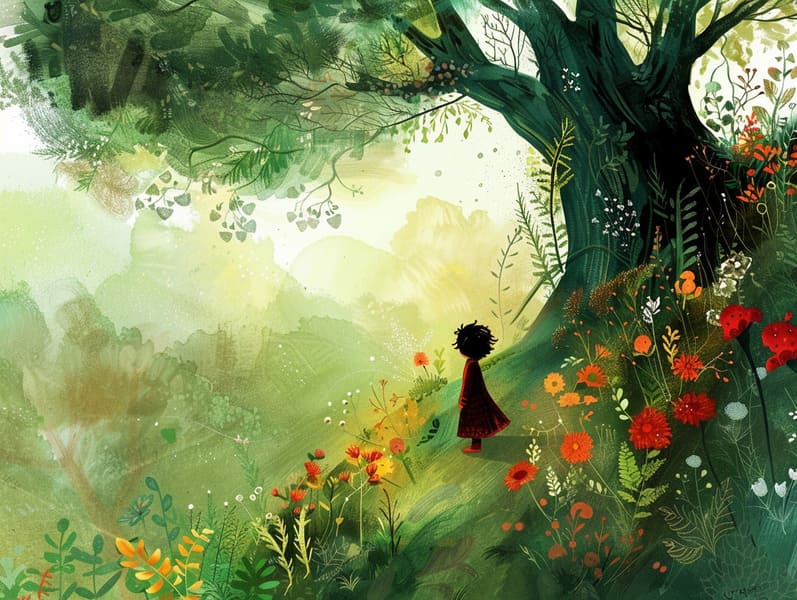The Beginning of Historical Fairy Tales with Its Steadfast Beauty.
The Beginning of Historical Fairy Tales with Its Steadfast Beauty.
Blog Article

Best fairy tales have historical significance. These stories have been relayed from one generation to the next ages before they were ever recorded. They came from a variety of cultures, including Asian traditions. They were initially passed along among adults, often carrying themes and messages reflective of the societal norms and beliefs of the time.
The Brothers Grimm, Jacob and Wilhelm Grimm, were among the first to collect many of these beloved stories. Their compilation, "Grimm's Children's Stories," included tales like "The True Bride," "Little Brother and Little Sister," and "The True Story of Snow White," which have since become staples in the world of iconic fairy tales. Similarly, Hans Christian Andersen's magical narratives, such as "The Story of the Little Mermaid," and "The Story of the Ugly Duckling," have captured hearts worldwide, establishing their place in the pantheon of treasured fairy tales.
Despite their age, fairy tales remain as applicable as ever, especially as nighttime stories for kids. These enchanting tales are now available in multiple formats, including colorful picture books, enchanting animations, and digital storybooks.
Their continued relevance can be ascribed to several delightful features:
Important Morals: Traditional fairy tales often convey important moral lessons. Narratives like "The Wolf and the Liar" teach the merit of integrity, while "The Story of the Tortoise and the Hare" underline the values of steadfastness and unassuming nature. These stories offer young ones clear distinctions between right and wrong, shaping their moral compass in a mild yet profound way.
Compassion and Knowledge: Fairy tales frequently involve beings facing challenges and problems, fostering young readers to connect with their struggles and encourage their triumphs. For instance, "Beauty and the Beast" illustrates the value of looking beyond appearances to realize the inner core of a person, strengthening insight and awareness.
Cultural Awareness: Many traditional fairy tales are rich in the cultural contexts from which they arose. Engaging with these fairy tales can provide illuminating insights into different cultures, fostering a sense of world insight and acknowledgment.
Fantasy and Innovation: The magical elements in fairy tales—talking animals—fuel children’s inventiveness. These tales lead readers to imaginary realms, promoting creative dreams and a sense of excitement that persists a lifetime.
Timeless fairy tales are not only alluring but also teaching. They serve as alluring tools in building various intellectual and emotional capacities in little ones. When classic fairy tales are told out loud, they enhance communication skills by teaching new vocabulary and complicated sentence structures. This practice also enhances hearing abilities and focus, as little ones concentrate deeply, expectant to see what happens next.
Furthermore, talking about the themes and characters of traditional fairy tales can enhance thought processes and reasoning skills. Young ones are educated to discern patterns, forecast, and realize cause and effect. These contemplations also boost young ones communicate their thoughts and feelings, nurturing their emotional intelligence.
In today’s modern era, the existence of digital storybooks has made these narratives more accessible than ever. Internet resources and digital apps extend broad selections of famous fairy tales that can be read or listened on anytime, anywhere. Fairy tales told out loud are particularly well-received, extending an fun way for kids to immerse in these fantastical tales. Audio stories and narrated videos transport characters and settings to life, often supported by fantastical soundtracks and harmonies that elevate the tale experience.
The timeless appeal of old fairy tales lies in their ability to evolve to today's society while continuing with their essential themes. Contemporary adaptations of these narratives often introduce more multicultural protagonists and modern settings, making them relevant to today’s audience. However, the core values of boldness, sympathy, and fairness remain unchanged, continuing to reach listeners of all ages.
Traditional fairy tales also offer a sense of comfort and recognition. They bequeath a systematic narrative with a clear beginning, middle, and end, often finishing with the termination of conflicts and the triumph of morality over immorality. This consistency can be calming for little ones, affording a sense of firmness in an variable world.
Classic fairy tales continue to entrance and train new generations, maintaining their charm and significance in modern society. As children's bedtime stories, they highlight a perfect blend of wonder and wisdom, cultivating moral values, website empathy, and creativity. The existence of web-based fairy tales and the sought after status of fairy tales spoken ratify that these traditional fairy tales remain attainable to new generations.
By sustaining and imparting these tales, we continue to praise the rich tapestry of inventiveness and cultural heritage. Whether you are discovering a artistically illustrated book, perusing a web-based library, or hearing an narrated book, the enchantment of popular fairy tales is always within reach. These stories show us of the invariable strength of storytelling and its ability to draw us together across epochs and places.
No matter if you are viewing a vibrantly illustrated book, browsing a internet collection, or hearing an spoken story, the elegance of traditional fairy tales is always within reach.
These stories remind us of the immortal spell of stories and its ability to unify us across centuries and lands, creating a bond that captivates and teaches alike.